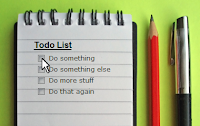My computer teacher explained to us that the computer does not 'think'-we think for it, and program it with the broken-down, simpler steps so it can complete a particular function. She had us use drawings of flow charts for this process. Although I don't use flow charts any more, (I use Mind Maps!) I've adapted this idea over and over again for kid's yoga classes, approaching teaching in a similar way.
Kids need to have the concepts, postures and steps broken down into smaller bits of information for them so they can be successful in the activity, especially children with learning and movement challenges. Gradually adding steps as they gain proficiency and build confidence helps to challenge and motivate them to higher functioning skill level.
What Lisa , (my OT advisor) and I do, is, after we familiarize the kids with the movements or sequences, through story, songs or pictures, we verbally take them through the steps of each movement & posture. One of us demonstrates with our own body, and the other will verbally explain and sometimes physically prompt if needed.
Then we have the kids take turns leading, and telling the group what we do first, second, etc. for a posture. We describe each step, using simple words and relevant visual and verbal imagery of how their body should feel and look while they are moving, sitting or standing. This helps them build a better awareness of their bodies, themselves and their world, inside and out. Once they understand the postures individually, we string theminto sequences either to tell a story, or to serve a specific purpose: (build balance, core strength, relaxation, etc.)
We teach them how to break down everything: the 4 steps we use to self calm, the steps we use for games, coming in at the beginning of class, for leaving, for homework and other activities they participate in. This helps keep them calm, organized and less overwhelmed not only in class, but in life.
Today, I came across this fantastic video by Barbara Lester, Licensed Clinical Social Worker and ASD Specialist, that takes this 'break down' technique a step further and into Task Analysis for daily living activities. Barbara discusses creating 'Job Cards' for chores and tasks that are done at home. This can be helpful to children who are struggling with distractions & getting their chores done, but especially for kids with executive functioning deficits such as ADHD, Asperger's Syndrome or high functioning autism.
I know there are a variety of ways to adapt this idea for homework and other tasks, and to individual homes, classrooms and therapy rooms, so I invite you to give it a look, pass it on and book mark Barbara's page!
Watch Barbara's Video below:
ASD Specialist: How to Get Kids to do Their Chores
 |
| 'Antique' Computer circa 1980 |
Subscribe to S.M.Art Kids / Healthy Kids by Email
Contact: barbara@bodylogique.com
.







0 comments:
Post a Comment